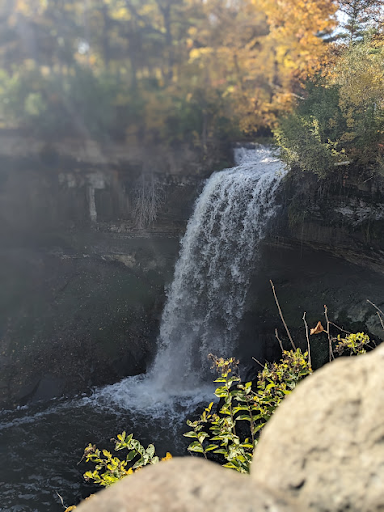Every state deserves its own holiday and Minnesota is no different.
Author’s Note: All information is credited to National Today webpage, Britannica, National Geographic, and Wikipedia.
The 32nd state to be admitted to the U.S.? State capitol originally dubbed as Pig’s Eye Landing? The Gopher State?
That would be Minnesota.
While granted statehood on May 11, 1858, National Minnesota Day happens to fall every year on March 1. It’s no secret that a large portion of NDSU students call Minnesota home and the holiday gives an excuse to celebrate this state.
Minnesota, like North Dakota, was acquired by the U.S. in 1803 through the Louisiana Purchase. In 1849, it was declared Minnesota Territory with its western border reaching out to the Missouri River. Most settlers, however, set up their homesteads along the Mississippi in current-day St. Paul and Minneapolis. St. Paul was originally called Pig’s Eye Landing and was adopted as the capital of the territory in 1849.
When Minnesota earned its statehood in 1858, the western border was cut back to the Red River which is now the border between Minnesota and North Dakota.
Most of the area’s settlers earned their living through the lumber industry. In 1884, iron ore production commenced in the Vermilion Range at Soudan. Massive amounts of the element were discovered at Mount Iron in the Mesabi Range in 1890 which set the industry into motion.
However, in the 1950s, the iron resource was extremely depleted. By the mid-1980s, the Mesabi Range had mined the last of its high-grade iron and was forced to switch to taconite, a lower-grade version of the resource.
It’s also not a secret that Minnesota has been a primary advocate for Civil Rights. This precedent dates back to the 1940s when Minneapolis Mayor Hubert H. Humphrey set up a council of human relations and passed legislation on fair employment. He advocated for human rights over states’ rights at the 1948 Democratic National Convention.
Later, in 1968, the American Indian Movement was passed in Minneapolis, protecting the rights of Native Americans.
The state is also home to some beautiful landscapes and natural phenomena. The Mississippi River begins its 2,340-mile journey to the Gulf of Mexico in Minnesota’s Itasca State Park. Plus, the nickname “Land of 10,000 Lakes” is not offered in vain–there are actually over 11,000 lakes in Minnesota!
In addition to the Mississippi River, there are beautiful natural forests and low hills. The far southeastern portion of the state is home to caverns and high bluffs. The state is full of wildlife and borders Lake Superior, the largest fresh-water lake on earth by surface area.
A few trivia facts to throw into the mix would be that Minnesota, a part of the Union, was the first state to send soldiers in the Civil War. Minnesota also has a state soil called Lester.
Minneapolis is home to the largest mall in the United States, the Mall of America, and downtown of the city houses, the world’s longest skywalk connecting over seventy-three city blocks.
Famous people who have lived in Minnesota include singers Bob Dylan and Prince; children’s author Kate DiCamillo; actors Chris Pratt, Marion Ross, Winona Ryder, Henry Fonda, and Judy Garland; Olympic gymnast Sunisa Lee; pilot Charles Lindbergh; and Peanuts comic strip creator Charles Schultz.
Whether you call Minnesota home or not, I’m sure with NDSU being in such close proximity to the state that the vast majority of us have visited at some time or another. Either way, March 1 offers a great excuse to show appreciation for the state on its very own national holiday.
